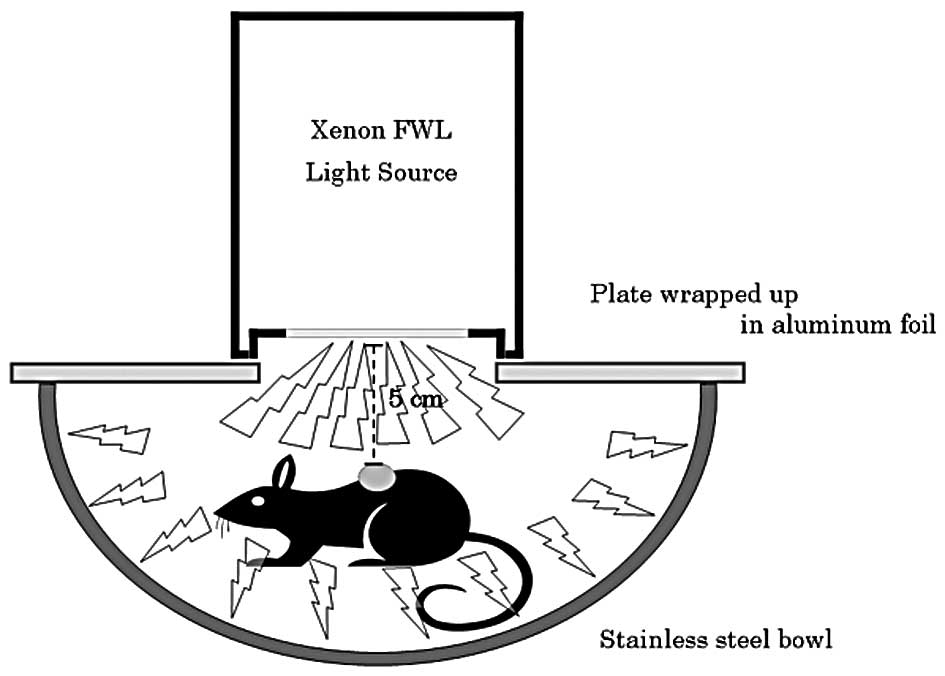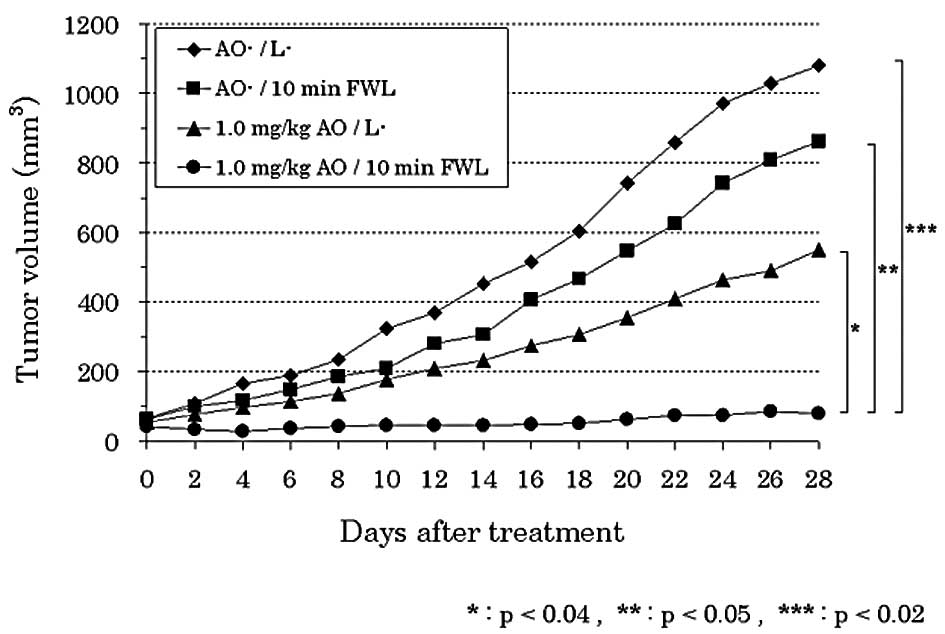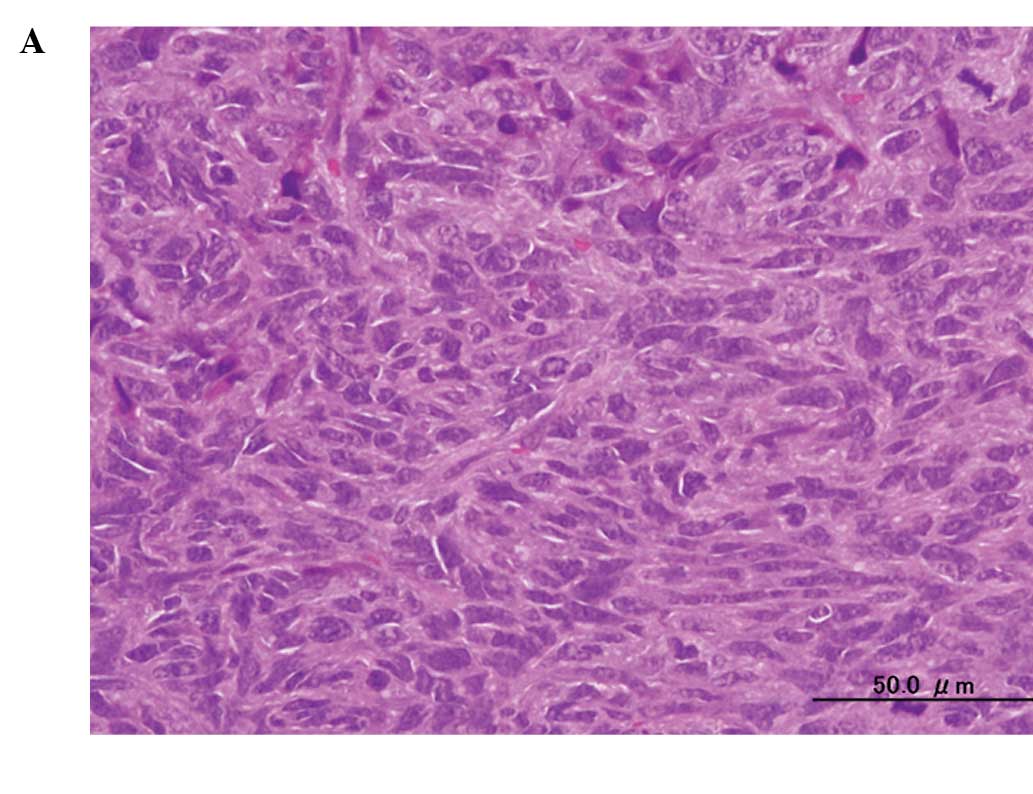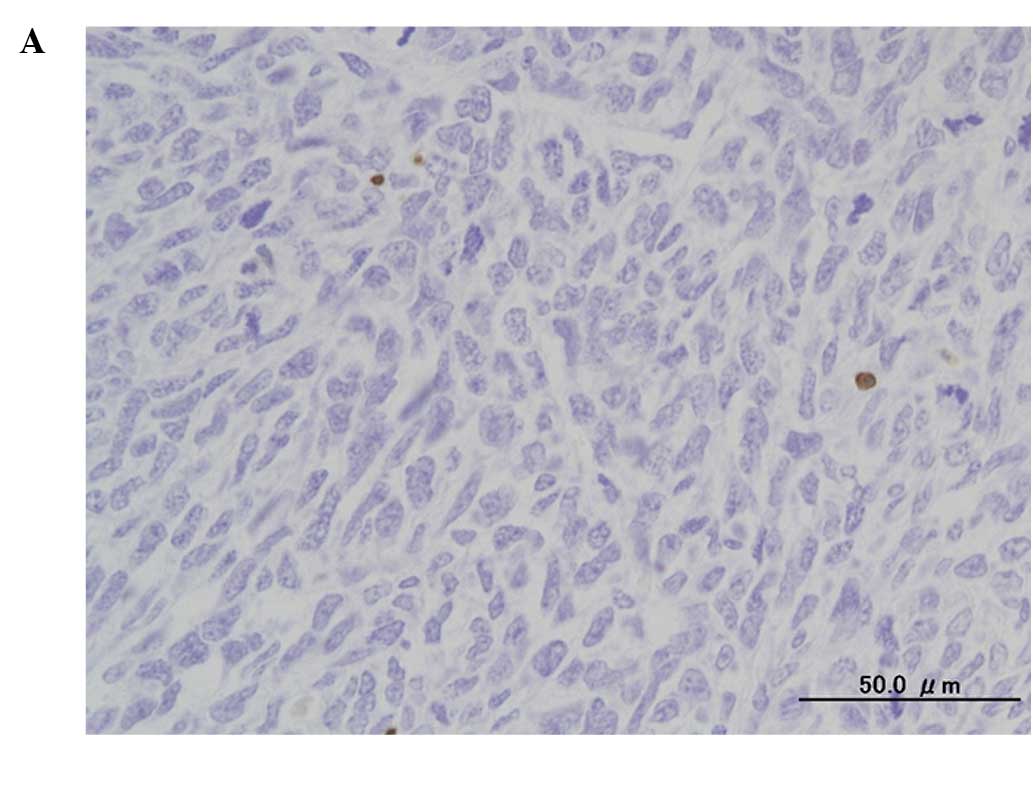Spandidos Publications style
Satonaka H, Kusuzaki K, Matsubara T, Shintani K, Nakamura T, Matsumine A, Iino T and Uchida A: In vivo anti-tumor activity of photodynamic therapy with intravenous administration of acridine orange, followed by illumination with high-power flash wave light in a mouse osteosarcoma model
. Oncol Lett 1: 69-72, 2010.
APA
Satonaka, H., Kusuzaki, K., Matsubara, T., Shintani, K., Nakamura, T., Matsumine, A. ... Uchida, A. (2010). In vivo anti-tumor activity of photodynamic therapy with intravenous administration of acridine orange, followed by illumination with high-power flash wave light in a mouse osteosarcoma model
. Oncology Letters, 1, 69-72. https://doi.org/10.3892/ol_00000012
MLA
Satonaka, H., Kusuzaki, K., Matsubara, T., Shintani, K., Nakamura, T., Matsumine, A., Iino, T., Uchida, A."In vivo anti-tumor activity of photodynamic therapy with intravenous administration of acridine orange, followed by illumination with high-power flash wave light in a mouse osteosarcoma model
". Oncology Letters 1.1 (2010): 69-72.
Chicago
Satonaka, H., Kusuzaki, K., Matsubara, T., Shintani, K., Nakamura, T., Matsumine, A., Iino, T., Uchida, A."In vivo anti-tumor activity of photodynamic therapy with intravenous administration of acridine orange, followed by illumination with high-power flash wave light in a mouse osteosarcoma model
". Oncology Letters 1, no. 1 (2010): 69-72. https://doi.org/10.3892/ol_00000012


















